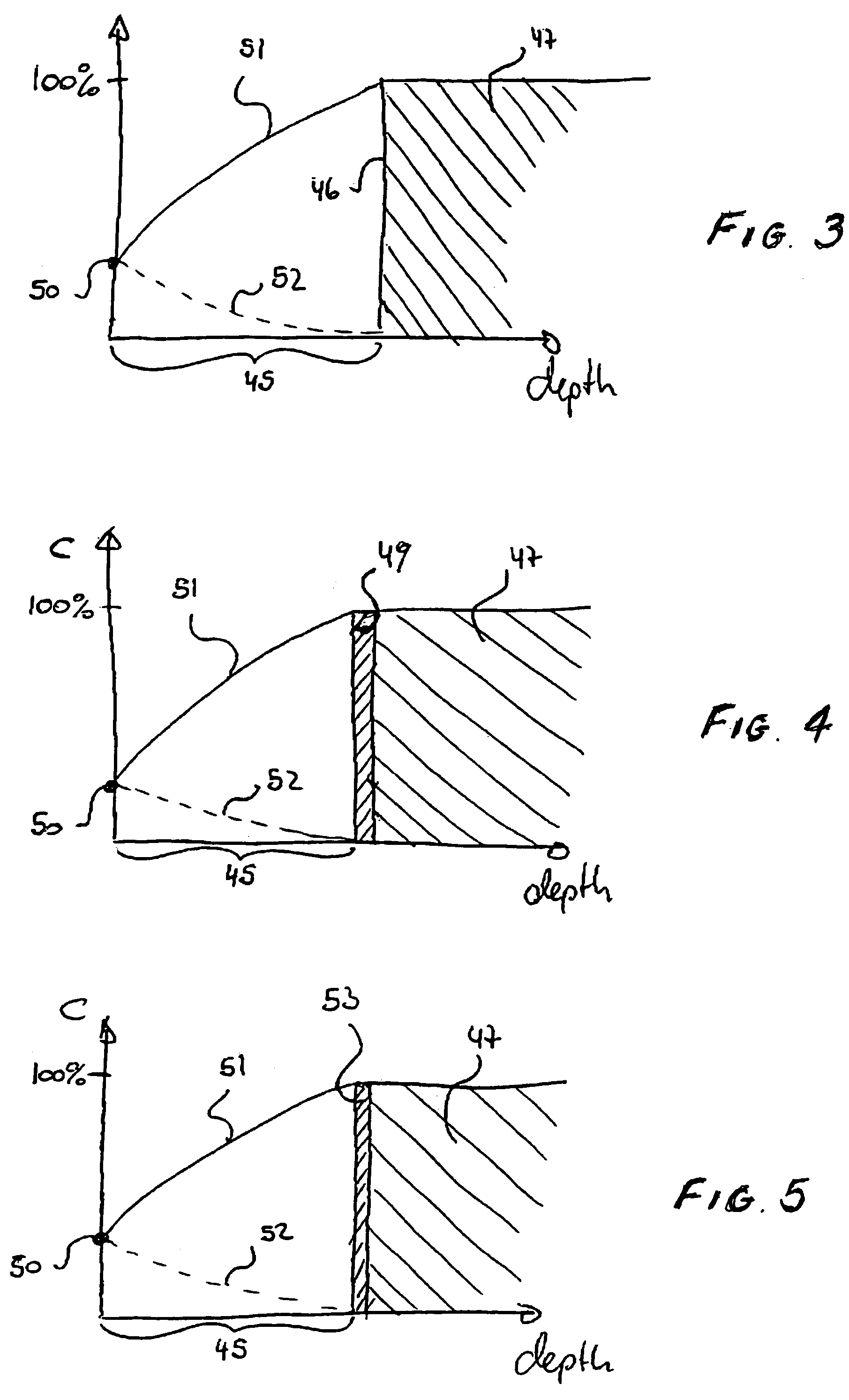Metal stent with surface layer of noble metal oxide and method of fabrication
a metal oxide and metal stent technology, applied in the field of body implantable stents, can solve the problems of drug-coated stents, angina or even myocardial infarction, hyperplasia and resulting restenosis,
- Summary
- Abstract
- Description
- Claims
- Application Information
AI Technical Summary
Benefits of technology
Problems solved by technology
Method used
Image
Examples
Embodiment Construction
[0030]It is to be understood that none of the drawing figures is intended to be a representation to scale of the respective depicted embodiment.
[0031]FIG. 1 is a perspective view of a stent 10 of hollow tubular self-supporting structure, with a substrate or core composed preferably of niobium (Nb) with a trace of zirconium (Zr), titanium (Ti) or tantalum (Ta), for example, preferably zirconium, the trace amount preferably being between approximately 1% and approximately 5%, and most preferably being about 2%, and remainder niobium. The added trace metal improves physical characteristics including strength of the stent for its intended function. Typically, the niobium stent material includes negligible amounts of tantalum (Ta, about 180 micrograms per gram (μg / g)), iron (Fe, <20 μg / g), silicon (Si, about<20 μg / g), tungsten (W, <20 μg / g), molybdenum (Mo, <20 μg / g), hafnium (Hf, <20 μg / g), carbon (C, about 7 μg / g), and nitrogen (N, about 53 μg / g), as well as amounts of hydrogen (H) and...
PUM
| Property | Measurement | Unit |
|---|---|---|
| thickness | aaaaa | aaaaa |
| thickness | aaaaa | aaaaa |
| thickness | aaaaa | aaaaa |
Abstract
Description
Claims
Application Information
 Login to View More
Login to View More - R&D
- Intellectual Property
- Life Sciences
- Materials
- Tech Scout
- Unparalleled Data Quality
- Higher Quality Content
- 60% Fewer Hallucinations
Browse by: Latest US Patents, China's latest patents, Technical Efficacy Thesaurus, Application Domain, Technology Topic, Popular Technical Reports.
© 2025 PatSnap. All rights reserved.Legal|Privacy policy|Modern Slavery Act Transparency Statement|Sitemap|About US| Contact US: help@patsnap.com



